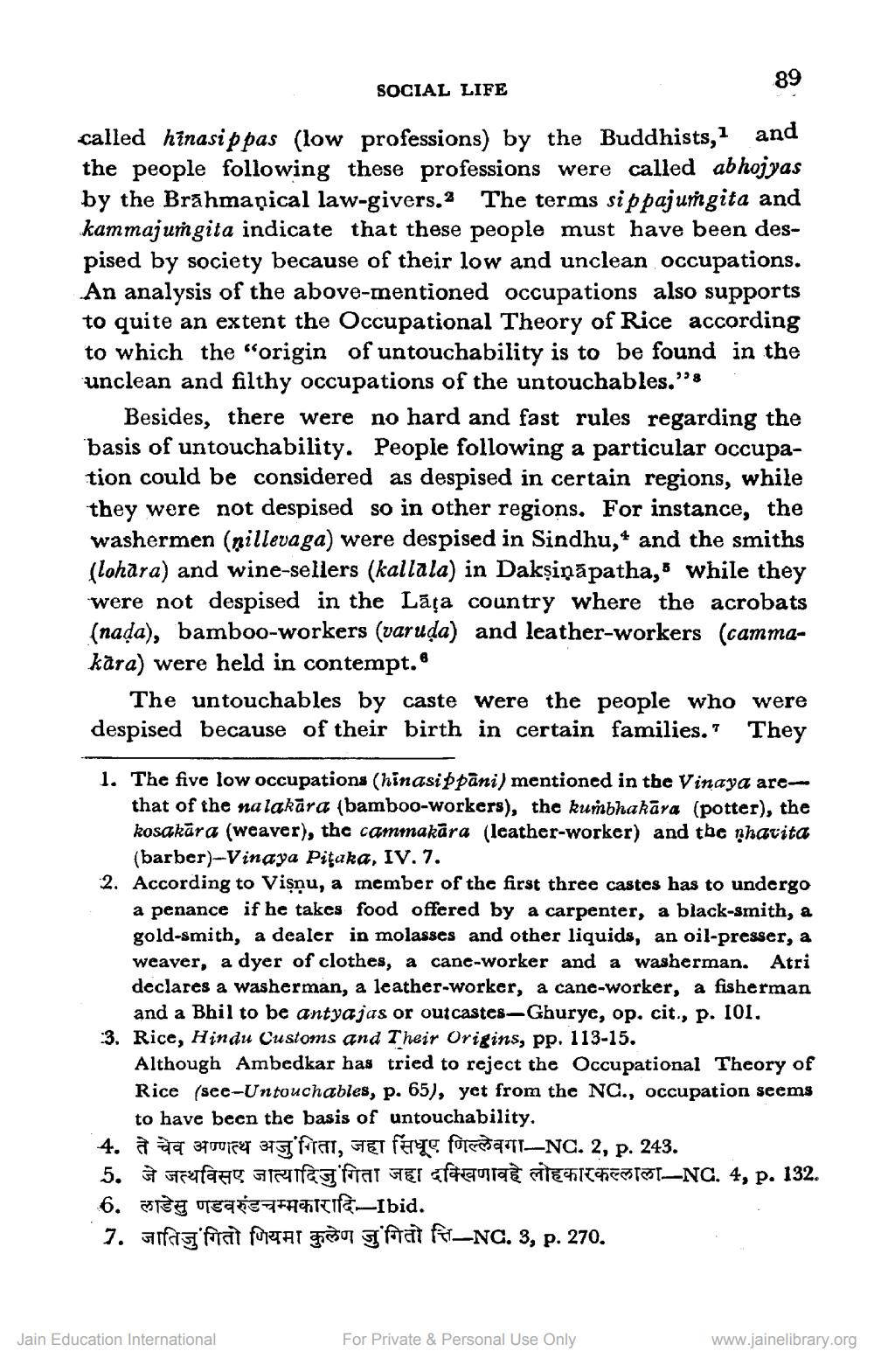________________
SOCIAL LIFE
called hinasippas (low professions) by the Buddhists, and the people following these professions were called abhojyas by the Brāhmaṇical law-givers. The terms sippajungita and kammajungita indicate that these people must have been despised by society because of their low and unclean occupations. An analysis of the above-mentioned occupations also supports to quite an extent the Occupational Theory of Rice according to which the "origin of untouchability is to be found in the unclean and filthy occupations of the untouchables.”
Besides, there were no hard and fast rules regarding the basis of untouchability. People following a particular occupation could be considered as despised in certain regions, while they were not despised so in other regions. For instance, the washermen (nillevaga) were despised in Sindhu,+ and the smiths (lohāra) and wine-sellers (kallala) in Dakşiņāpatha,s while they were not despised in the Lāça country where the acrobats (nada), bamboo-workers (varuda) and leather-workers (cammakāra) were held in contempt.
The untouchables by caste were the people who were despised because of their birth in certain families.' They
1. The five low occupations (hinasippani) mentioned in the Vinaya are
that of the na lakāra (bamboo-workers), the kumbhakāra (potter), the kosakāra (weaver), thc cammakāra (leather-worker) and the nhacita
(barber)-Vinaya Pitaka, IV.7. 2. According to Vişnu, a member of the first three castes has to undergo
a penance if he takes food offered by a carpenter, a black-smith, a gold-smith, a dealer in molasses and other liquids, an oil-presser, a weaver, a dyer of clothes, a cane-worker and a washerman. Atri declares a washerman, a leather-worker, a cane-worker, a fisherman
and a Bhil to be antyajas or outcastes-Ghurye, op. cit., p. 101. :3. Rice, Hindu Customs and Their Origins, pp. 113-15.
Although Ambedkar has tried to reject the Occupational Theory of Rice (see-Untouchables, p. 65), yet from the NC., occupation seems
to have been the basis of untouchability. 4. aaa sfouce 34'tral, TET HELE focall_NC. 2, p. 243. 5. Tagg arafagfrat el cfaerie TE ACESTIT-NC. 4, p. 132. 6. JEG TEHETtafittifa—Ibid. 7. arfag'firat fortal godda g'firat ft-NC. 3, p. 270.
Jain Education International
For Private & Personal Use Only
www.jainelibrary.org




